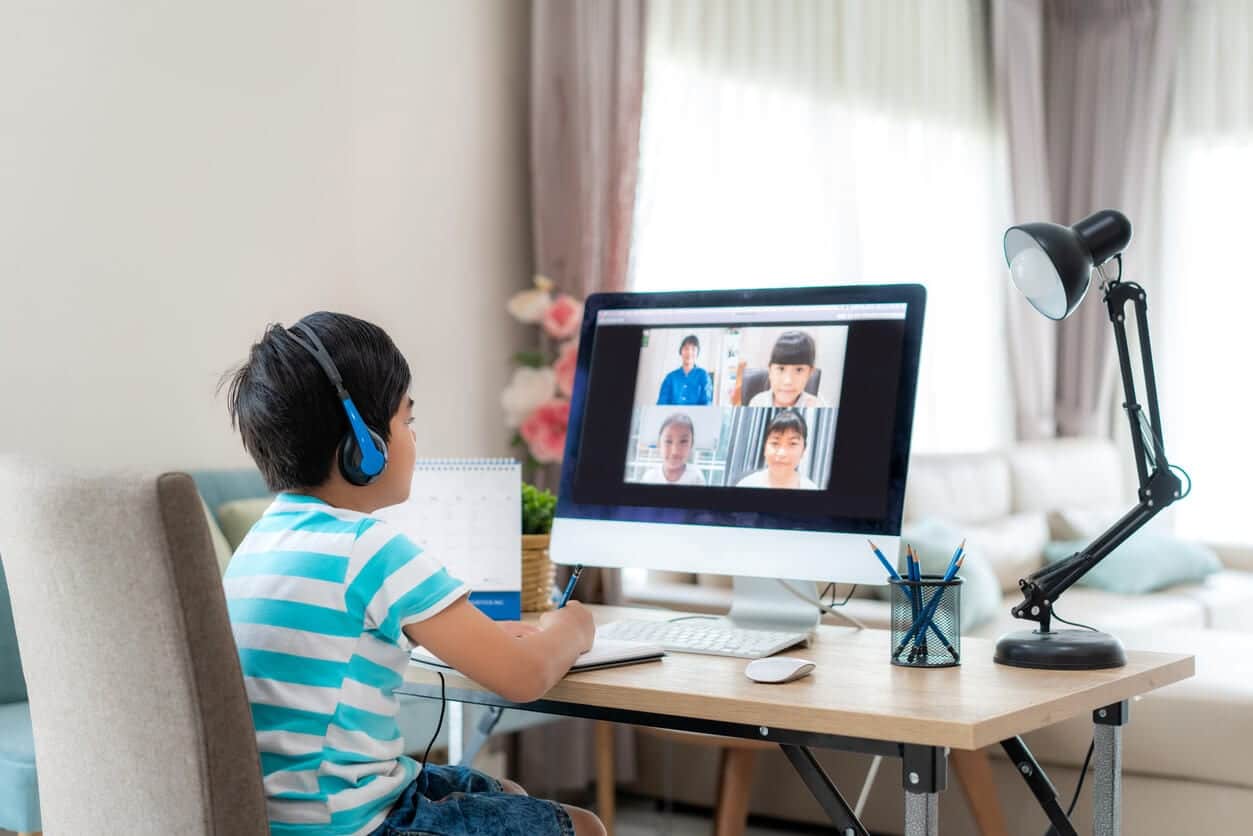Even as the pandemic gradually recedes, many families are deciding to continue online learning for their children, whether for school or after-school activities. Many parents have been pleasantly surprised by the availability of good-quality and engaging learning activities that their kids could do from home during the pandemic. I believe it likely that the convenience, variety, and quality of online classes and activities will continue to appeal to families even after masking and social distancing are a thing of the past. If you’re searching for an online STEM class for your child and are finding that identifying the right match for your child’s age, interests, and skills is a challenge, today’s article is for you. Here, I’ve suggested some key issues to consider as you explore potential classes for your child.
Online STEM Classes Can Work!
Before the pandemic, online STEM classes for kids were not the norm, but a year of after-school activities and summer STEM camps have demonstrated that online programs can work. The winning formula included smaller classes, shorter session times, incorporating active learning with multiple ways to learn, and in some cases, independent work outside of camp and classes. Kids were happy, learning, and engaging with their fellow students and instructors.
My daughter took an online business entrepreneurship class in the summer of 2020 and loved it! She was exposed to business concepts and topics that she wouldn’t have experienced at her high school, and she created an idea for a business and developed a business plan with another student. The class was highly interactive and engaging, an overall excellent learning environment. It made me realize that live online learning can be both beneficial and enjoyable for kids and teens.

Choosing a Class for Your Child
There are many factors to consider when choosing an online STEM class. The shortlist below is based on what I learned from speaking with STEM providers and parents during the past year, and from my own experience choosing a class for my daughter. I hope they’ll help guide you, first in deciding if an online class is right for your child, and if it is, in finding a good match.
1. What is the gap you are hoping to fill for your child with an online class? As we recover from this unusual and stressful year, when your child’s previous routine was disrupted and their usual after-school activities curtailed, take a step back and ask yourself what your child may need from a class. Are they still missing the social aspect of the after-school activities they used to do? Are they frustrated at having lost ground in a skill they were learning in a club or after-school program? Do they need more stimulation or a way to relax? Consider which of these aspects of a class would be most important and use your answer to guide your assessment of particular classes and teaching formats.
2. Assess how much screen time your child will have for school, and how well your child will tolerate the addition of one more screen-intensive class. If your child is going to continue with remote learning and in danger of online burnout, maybe an outdoor activity or unstructured playtime will be better for your child.
3. How does your child learn best? Some classes are highly interactive, others include a lot of hands-on learning, while others challenge students to work independently between class sessions. Look for a course that matches your child’s preferences and style so it’s an enjoyable, relaxing format for him or her.
4. When assessing a class, review the content offering, curriculum, instructional approach, and the instructor’s teaching experience. If the social aspect is important for your child, look for an online class that has small classes and plenty of time built into the schedule for the students to interact. If you’re looking for ways to fill your child’s after-school hours, some classes also include independent work where students will work on a project, build their skills, and deepen their knowledge by reviewing what they worked on in the class. Others have the students work on a team-based project between classes.
5. Will the class offer your child hands-on, participatory, active learning? Teachers all over the country have discovered that the classic lecture format is especially difficult when they’re conducting online learning. Keeping the students actively engaged is essential, yet some passive learning is inevitable. If your child is resuming school in an online format, a maker-style class or a class where the students are writing code interactively or collaborating on projects may be a perfect complement to the rest of their day, balancing their more abstract in-school learning with an activity that yields a tangible or visible product.
6. Are you hoping that the class will free you up to work or do other projects without interruption? If so, assess whether your child will be able to participate without your assistance. Also, plan to spend some time setting up the computer, loading software, creating a work area, and/or unpacking supplies for your child in advance. You may also need to work with your child before the first class, so they are comfortable opening or working with the software, using Zoom or Google Meet, or switching between screens if necessary. The time you spend in advance will go far to ensuring that your child can work independently and you will have the time you need to do other things.
7. Many online program providers have discovered that they need to offer smaller class sizes and build in time for the students to interact and socialize together. Smaller classes enable the instructor to get to know each child and work with them individually. This may be an ideal situation for your child, especially if they are finding school (whether online or in-person) stressful. In fact, some children who are shy in larger groups feel more comfortable in a small online group setting and participate more. Assess both your child’s personality and the school situation.
8. Involve your child in the choice of class. Talk with your child about their interests and share a list of class options. They may surprise you (and even themselves) with a new interest or by their curiosity about something they haven’t explored before. Talk together about the time commitment and logistics, and how your child views success in the class.
Ready to Start Searching for Classes?
Here’s a collection of online STEM classes your kids can attend at home. They include subjects in coding, engineering, science, math, technology, and entrepreneurship and in after-school, evening, and weekend formats. These programs are offered live and are led by instructors for a fee. I would love to hear about your experience choosing a class and what factors were important to you.







